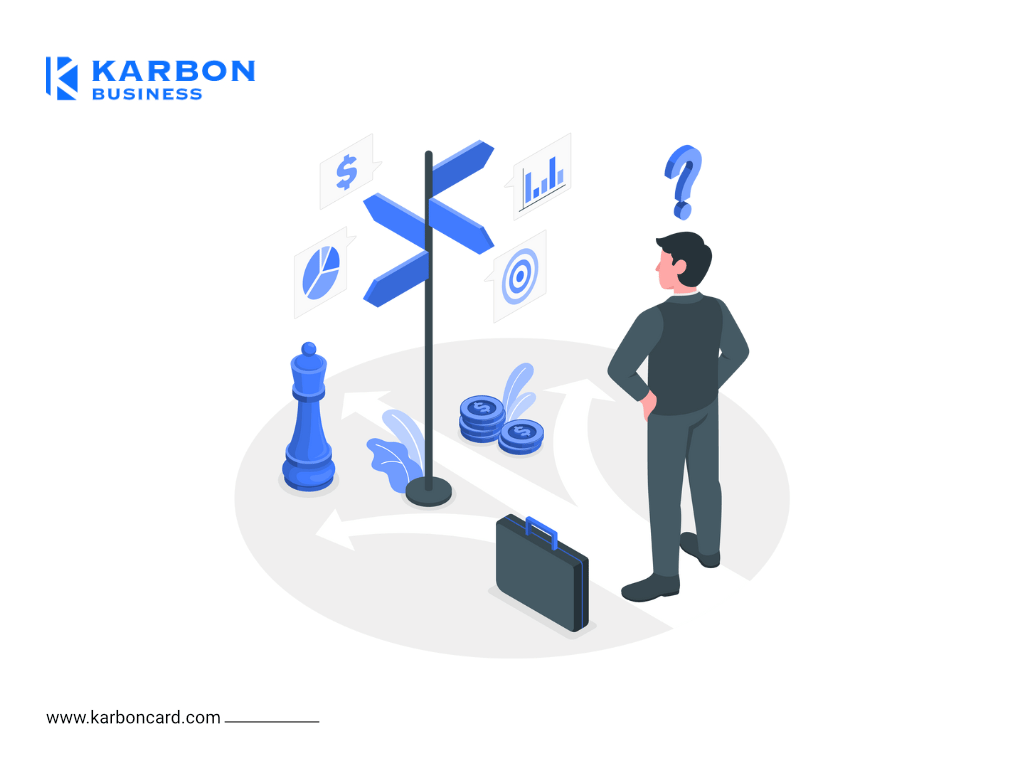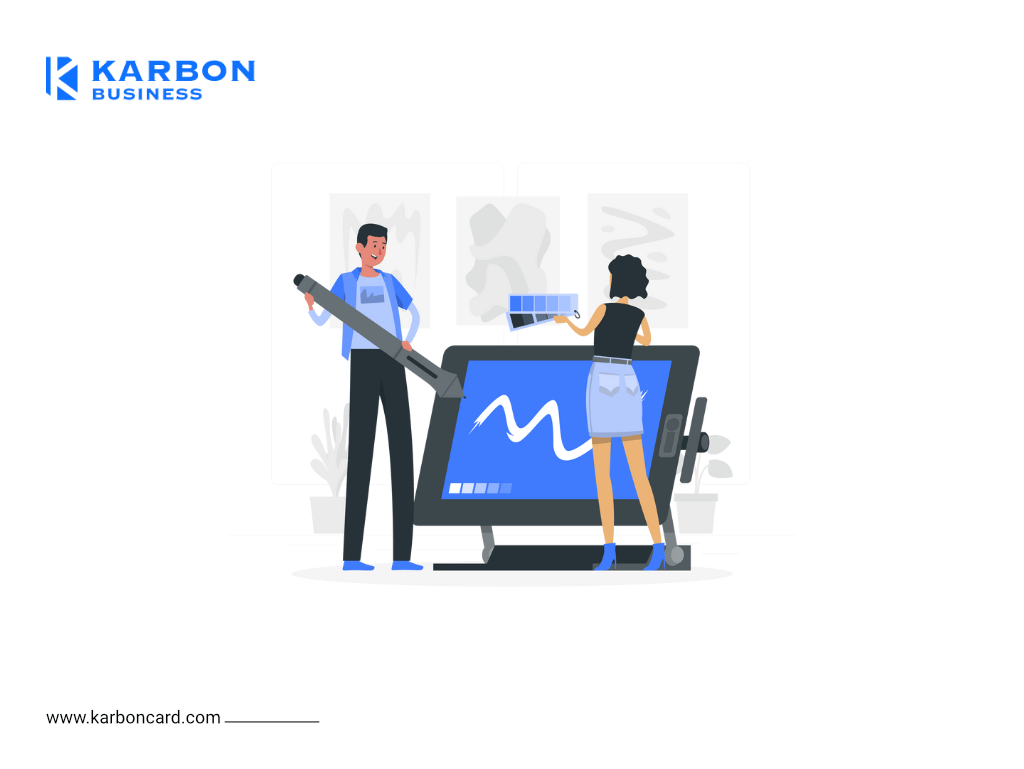Key takeaways
- India enters 2025 with 15 million plus freelancers and rapid enterprise adoption, with the global freelance economy nearing $500 billion according to freelancing trends statistics and the freelance platforms market report.
- Demand is strongest from the US, EU, and UK, with tech, design, marketing, and education leading categories, as summarized in Freelancing Trends India 2025.
- Indian freelancers see average annual incomes around ₹20 lakh, with 23% crossing ₹40 lakh, based on income and operations insights for freelancers.
- Local payment rails like ACH, SEPA, and FPS are faster and cheaper than SWIFT, especially for recurring invoices.
- Always secure e-FIRA or FIRC for every foreign inward remittance, see this guide on e-FIRA and FIRC.
- For GST zero-rating, apply a Letter of Undertaking, learn more about the LUT for zero rated services.
- Platforms like Karbon Business offer virtual USD, EUR, GBP, and CAD accounts, mid market FX, T plus 1 to T plus 2 INR settlement, and automatic e-FIRA.
- Defend your rates with outcome based proof, clear contracts, and payment terms, minimize leakage by quoting in client currency and using low markup rails.
The Global Freelancing Market Size in 2025
The global freelancing economy is estimated at roughly $500 billion in 2025, spanning platforms and direct contracts, per freelancing trends statistics and the freelance platforms market report. Roughly 1.57 billion people freelance worldwide, close to 47% of the workforce, as tracked by global freelancer counts. The shift to flexible, outcome focused hiring is now mainstream.
Clients are buying outcomes, not hours, and they prefer payment methods that are fast, compliant, and low cost.
Where the demand comes from
- The US, EU, and UK remain the largest buyers of knowledge work, with continued strength reported in market demand analysis and Freelancing Trends India 2025.
- India, Pakistan, and the Philippines are top supplier markets, and enterprise use of hybrid teams is outpacing marketplace growth.
- Tech, AI, design, and marketing lead, with education and consulting rising as durable categories.
What this means for you
Expect clients to scrutinize value delivered per dollar more than ever, expect project based pricing, and expect preferences for local rails like ACH, SEPA, and FPS that settle faster, with lower cost than SWIFT. If you understand these rails, you get approvals quicker and keep more of each invoice.
Freelancing Trends India 2025: Market Snapshot
India now hosts more than 15 million freelancers, the second largest market after the US, with platform revenues projected to climb sharply per Freelancing Trends India 2025, global freelancer counts, and the India outlook by India freelance platforms market. Off platform direct work likely pushes the real market well beyond platform revenue totals, as captured in scope and challenges of freelancers.
The gig workforce is expanding
India’s broader gig workforce may reach 23.5 million by 2029 to 2030 and 61.9 million by 2047, near 15% of the non farm workforce, per Freelancing Trends India 2025 and India’s flexible workforce insights.
Where the work comes from
Over 60% of cross border projects originate in the US, UK, and EU. The Middle East and APAC add steady growth. Tech, content, design, consulting, edtech, and fintech dominate, as captured in Freelancing Trends India 2025 and freelancer operations research.
New realities for 2025
AI copilots are resetting deliverables. Clients expect SLAs, privacy compliance, and punctual invoices. They often prefer local currency invoices, and local rail payouts. On compliance, export of services rules, LUT for GST zero rating, and proper e-FIRA or FIRC are mandatory, not optional.
India Freelancer Income Report 2025: What People Actually Earn
The average annual freelance income is around ₹20 lakh, with 23% earning above ₹40 lakh, depending on skills, seniority, and pricing strategy, per income findings for Indian freelancers.
Hourly rate benchmarks by role
- Software development, full stack: $30 to $80 per hour in tier 1 cities, $18 to $40 per hour in tier 2 and remote.
- Backend and DevOps: $35 to $100 per hour in tier 1, $25 to $60 per hour in tier 2.
- Data science and machine learning: $40 to $125 per hour in tier 1, $25 to $70 per hour in tier 2.
- Design, UI and branding: $20 to $60 per hour in tier 1, $15 to $35 per hour in tier 2.
- Content writing and SEO: $15 to $40 per hour in tier 1, $10 to $25 per hour in tier 2.
- Performance marketing: $20 to $60 per hour in tier 1, $15 to $40 per hour in tier 2.
- No code and automation: $25 to $60 per hour in tier 1, $18 to $40 per hour in tier 2.
- Product management and consulting: $40 to $100 per hour in tier 1, $30 to $70 per hour in tier 2.
Specialization raises the ceiling, proof of outcomes and trusted references help you capture the upside.
Payment frequency and cycles
Milestones and monthly retainers dominate. Cross border receivables average 30 to 45 days from invoice to INR credit. Deduct marketplace fees, FX markups, and domestic bank charges, and a $1,000 invoice can shrink to roughly ₹70,000. Minimizing fees and delays is a profit lever.
What is changing in 2025
AI boosts output, niches command margins, competition pressures pricing, and USD to INR moves can affect take home amounts. Understanding these forces helps you price with confidence.
How to Set and Defend Your Rates in 2025
Build your rate card
- Know your cost floor, include tools, taxes, and compliance.
- Study the value ceiling using job boards and peer data, for example the signals in Freelancing Trends India 2025.
- Stack proof, certifications, portfolio, testimonials, and case studies anchor your price.
Choose your pricing model
- Hourly for evolving scopes.
- Fixed project for clearly defined outcomes.
- Retainer for ongoing maintenance or growth work.
- Licensing for IP heavy design or content.
Adjust based on demand and complexity
Raise rates when demand is high or work is complex, trim for long term anchors or simple scopes. Signal value with outcomes, not just hours.
Negotiation tactics that work
- Phase delivery to match budgets, for example split a $10,000 project into three milestones.
- Adopt outcome pricing, for example a ₹4 lakh campaign tied to revenue uplift.
- Always use contracts, define scope, milestones, payment terms, and late fees.
Minimize payment leakage
- Quote in the client’s currency and embed low markup rails.
- Standardize invoices with clear instructions and due dates.
- Set expectations up front to accelerate approvals and payouts.
Cross-Border Gig Economy India: Payment Rails Explained
The typical payment flow
You issue an invoice, the client pays via a rail like ACH, SEPA, FPS, SWIFT, or a card link, a provider routes and converts funds, and you receive INR in your bank.
ACH, SEPA, and FPS
Local bank transfer systems in the US, EU, and UK. Pros include lower fees and T plus 1 to T plus 2 settlement, easy INR conversion. Cons include the need for virtual local accounts or payment links. Learn why ACH often beats SWIFT for routine invoices.
SWIFT
Global, bank to bank messaging. Pros include global reach and large amounts. Cons include 4 to 7 working days and higher fees, with intermediate bank charges.
Card links and platform payouts
Fast for small invoices, T plus 1 typical, but subject to limits, holds, and chargeback risk.
Compliance and documentation
Every foreign inward remittance needs compliant paperwork. Secure an e-FIRA or FIRC for GST claims, taxation, and FEMA compliance. If your provider auto generates it, tax season is painless.
Key risks to watch
- Platform or bank holds, and AML checks.
- FX swings affecting net INR.
- Delayed settlements that create cash flow gaps.
Typical timelines in 2025
- ACH, SEPA, FPS: T plus 1 to T plus 2 after client payment.
- SWIFT: T plus 4 to T plus 7 days.
- Card or link: T plus 1, subject to limits and holds.
Hedging tip
If allowed, hold foreign currency for 30 to 60 days and convert when INR is favorable, especially for invoices above $5,000.
Tools for Faster, Lower Friction Payments
Simple steps every freelancer can take
- Invoice in client currency and include local rail details.
- Use payment links for small milestones.
- Hold currency temporarily to manage INR volatility.
- Prefer providers with automatic e-FIRA generation.
- Aim for T plus 1 or T plus 2 settlements, avoid SWIFT except for large remittances.
When you need a cross border payment solution
Karbon Business Karbon Business: Virtual USD, EUR, GBP, and CAD accounts, flat 1% fees without FX markup, mid market conversion, INR payout in 24 to 48 hours, automatic e-FIRA in 24 hours, currency holding, tracking, and support.
Other options used by Indian freelancers include Wise Business, Payoneer, PayPal, and RazorpayX International, each with different fee structures and timelines.
Comparison checklist
- Total cost, platform fee plus FX markup.
- Settlement speed, T plus 1 or T plus 2 is ideal.
- Compliance documents, automatic e-FIRA or FIRC is a must.
- Support quality, quick resolution when a payment is stuck.
Where the Opportunities Are in 2025
Resilient niches
Compliance SaaS, cybersecurity, AI integration, analytics, and revenue operations show consistent budgets and timely payments.
Geographies with stable pay cycles
The US, UK, select EU countries, Singapore, and Australia tend to follow contracts, approve invoices promptly, and honor milestones.
Rate multipliers
- Demonstrate outcomes, revenue impact, time saved, risk avoided.
- Specialize by vertical, for example SaaS, fintech, healthtech.
- Build case studies and references from recognized logos.
- Show a clear security and compliance posture.
Quarterly action plan
- Upgrade skills in AI, analytics, automation each quarter.
- Productize templates, frameworks, and calculators.
- Proactively pitch high value geographies.
- Review wins and pricing every quarter and adjust.
Real Scenarios Indian Freelancers Face
Scenario one: Client insists on ACH
A US client wants ACH, your wallet route charges 3% plus bad FX. On $2,000, you lose ₹8,000 plus. Solution: get a virtual US account, receive via ACH, convert at mid market and settle in 24 to 48 hours, total cost near 1 to 2%.
Scenario two: SWIFT delay causes cash crunch
SWIFT can take 4 to 7 days, sometimes longer with intermediary banks. Prefer local rails for routine invoices and maintain a one month buffer.
Scenario three: Missing FIRA at tax time
Your CA asks for FIRCs and e-FIRAs, half are missing. Use providers that auto generate e-FIRA within 24 hours, and file as payments arrive.
Scenario four: Rupee volatility eats your margin
USD to INR moved against you between invoice and payout. If allowed, hold currency 30 to 60 days and convert when favorable to protect margins.
Compliance Essentials Every Indian Freelancer Must Know
Export of services
Describe services on the invoice, ensure receipt under RBI rules, and maintain proofs. This is essential for export status and tax treatment.
GST zero rating via LUT
Apply for a Letter of Undertaking, see the guide to LUT for zero rated services. After approval, you do not charge GST on export invoices.
e-FIRA and FIRC
Retain e-FIRA or FIRC for every inward remittance to support GST claims, tax filings, and FEMA compliance.
AML and RBI checks
Be prompt with KYC and AML clarifications. Delays can hold funds for weeks. Keep your documents current and accessible.
The Freelancing Trends India 2025 Bottom Line
The market is bigger, faster, and more global than ever, per Freelancing Trends India 2025, the India platforms outlook, and global stats. To win, combine strong skills with smart operations. Price confidently, choose efficient rails, automate compliance, and focus on niches and geographies that pay on time. You are not just competing on skill, you are competing on speed, reliability, and payment ease.
FAQ
How can I receive international payments in India without PayPal?
You can use inward remittance platforms that provide virtual local accounts for USD, EUR, GBP, and CAD. For example, Karbon Business lets US clients pay you via ACH, UK clients via FPS, and EU clients via SEPA, with mid market FX, T plus 1 to T plus 2 INR settlement, and automatic e-FIRA. This avoids higher PayPal fees and poor conversion rates.
Which is better for freelancers in India, ACH or SWIFT for getting paid from the US?
For routine invoices, ACH is usually cheaper and faster than SWIFT. ACH commonly settles in 24 to 48 hours with a lower all in cost, while SWIFT can take 4 to 7 days and may involve intermediary bank fees. Read this breakdown on ACH versus SWIFT fees for India. Platforms like Karbon Business help you receive ACH into a virtual USD account, then convert at live rates.
What documents do I need for FEMA and GST compliance when I get paid from abroad?
You need an e-FIRA or FIRC for each inward remittance, along with your export invoice and basic KYC. For GST zero rating, apply an LUT, then maintain e-FIRA, invoice, and proof of receipt. See this guide to e-FIRA and FIRC and learn how to get your LUT for zero rated services. Many freelancers prefer Karbon Business because it auto issues e-FIRA within 24 hours.
How to invoice US or EU clients in their currency and still get the best INR rate?
Issue the invoice in USD or EUR, collect via local rails like ACH or SEPA, then convert to INR at mid market FX through a provider that passes through live rates. With Karbon Business, you can hold currency briefly, then convert when INR is favorable, which can add a few percentage points to your net.
Is it possible to open a US bank account as an Indian freelancer for receiving ACH?
Opening a physical US bank account can be complex without US presence. A simpler path is a virtual USD receiving account offered by cross border platforms. For instance, Karbon Business provides a virtual USD account to receive ACH like a local, then settles INR to your Indian account with e-FIRA.
What is e-FIRA versus FIRC, and which one do I need for taxes in India?
Both confirm foreign inward remittances. e-FIRA is the digital version widely issued by AD banks and compliant platforms. For GST zero rating and FEMA, your CA will ask for e-FIRA or FIRC per payment. Using a provider that auto generates e-FIRA or FIRC helps you avoid last minute document chases.
How do I set my hourly rate as a beginner freelance developer in India?
Start from your cost floor, research market ranges, then position slightly above average if you can prove outcomes. In 2025, tier 1 full stack ranges around $30 to $80 per hour, tier 2 around $18 to $40 per hour. Package options, for example milestone bundles or retainers, and showcase results to defend your quote. For payment speed and lower fees, route payouts via ACH, SEPA, or FPS through platforms like Karbon Business.
How can I reduce fees on a $5,000 USD invoice from a US client?
Ask the client to pay via ACH instead of SWIFT, use a provider with flat platform fees and mid market FX, and avoid extra conversion hops. With Karbon Business, the all in cost can be near 1%, versus 3 to 5% or more through cards or traditional routes. You can also hold USD briefly and convert when INR strengthens.
Do I need to charge GST on invoices to clients outside India?
If the service qualifies as export of services and you have an LUT, your export invoices are zero rated, you do not charge GST but must keep proper documents. Learn more about the LUT process for zero rated services. Ensure every payment has an e-FIRA, which platforms like Karbon Business auto issue.
What is the fastest way to get paid from UK or EU clients into my Indian bank?
Use local rails, FPS for UK and SEPA for EU, then settle to INR in T plus 1 to T plus 2. A multi currency provider that supports virtual GBP and EUR accounts simplifies this. Karbon Business supports GBP and EUR receiving, mid market FX, and quick INR payouts with e-FIRA.
I work on Upwork and direct clients both, how should I manage documentation for compliance?
Maintain separate folders per client, store each invoice, payment proof, and e-FIRA or FIRC. For platform payouts, download statements, for direct clients, ensure the provider issues e-FIRA automatically. At year end, your CA will reconcile these for GST and income tax.
My client wants a card link, is it safe and what are the drawbacks?
Card links are fast and convenient for small amounts, but fees can be higher, there can be amount caps, and there is chargeback risk. If possible, nudge clients to local bank transfers, for example ACH, SEPA, or FPS, using a solution like Karbon Business for better fees and faster INR settlement.










